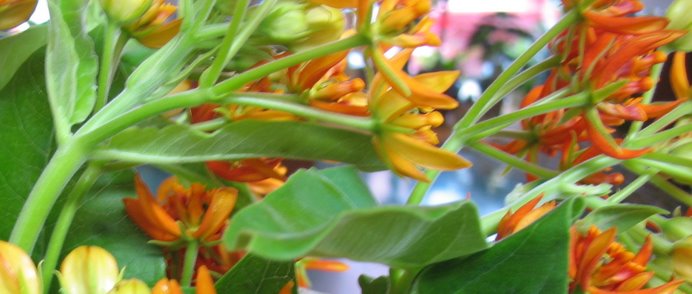
Poinsettia (Euphorbia pulcherrima- translates into "the most beautiful euphorbia," ) is a shrub belonging to the spurge or Euphorbiaceae family.
FICTION!
Poinsettia Plants Are Poisonous And Should Be Kept Away from Children and Pets
Over 65 million plants are sold every holiday season in the United States alone.
Poinsettias are native to Mexico
December 12th is National Poinsettia Day marking the death of Joel Roberts Poinsett, who is credited in introducing the plant to the United States in 1825.
There are over 100 varieties of poinsettias
80% of poinsettias are purchased by women
74% consumers prefer the traditional red color
HOW TO CHOOSE YOUR POINSETTIA
Choose a plant with dark green foliage down to the soil line.
Choose bracts (modified leaves) that are completely colored.
Do not purchase poinsettias with a lot of green around the bract edges.
Do not choose plants with fallen or yellowed leaves
The poinsettia should look full, balanced and attractive from all sides
The plant should be 2 1/2 times taller than the diameter of the container
Choose plants that are not drooping or wilting.
Do not purchase plants that are displayed in paper or plastic sleeves. Plants held in sleeves will deteriorate quickly and likely get root rot.
Do not purchase plants that have been displayed or crowded close together. Crowding can cause premature bract loss
Check the plant’s soil. If it’s wet and the plant is wilted, this could be an indication of root rot
Check the poinsettia’s maturity. Check the true flowers which are located at the base of the colored bracts. If the flowers are green or red-tipped and fresh looking the bloom will "hold" longer than if yellow pollen is covering the flowers
When you take the poinsettia home, be sure to have it sleeved or covered when outdoor temperatures are below 50°F.
The length of time your poinsettia will give you pleasure in your home is dependent on (1) the maturity of the plant, (2) when you buy it, and (3) how you treat the plant. With care, poinsettias should retain their beauty for weeks and some varieties will stay attractive for months.
AFTER YOU HAVE MADE YOUR POINSETTIA SELECTION
Make sure it is wrapped properly because exposure to low temperatures even for a few minutes can damage the bracts and leaves.
Unwrap your poinsettia carefully and place in indirect light. Six hours of light daily is ideal. Keep the plant from touching cold windows.
Keep poinsettias away from warm or cold drafts from radiators, air registers or open doors and windows.
Ideally poinsettias require daytime temperatures of 60 to 70°F and night time temperatures around 55°F. High temperatures will shorten the plant’s life. Move the plant to a cooler room at night, if possible.
Check the soil daily. Be sure to punch holes in foil so water can drain into a saucer. Water when soil is dry. Allow water to drain into the saucer and discard excess water. Wilted plants will tend to drop bracts sooner.
Do not fertilize when it is in bloom.


No comments:
Post a Comment